|

THE DOMESTIC VIOLENCE CYCLE
ANTI-DOMESTIC VIOLENCE SUNDAY
CULTURAL RESOURCES
Sunday, July 28, 2013
Rebecca Fisher, Guest Cultural Resource Commentator
Senior Pastor, Fairview United Methodist Church, Bloomington, IN
I. Historical Background
Amy and Andrew Billingsley wrote a chilling summary and prophetic urging in Black Families in White America, published in 1968, that describes the beginnings of the legacy of domestic violence in the African American community:
The slave system in the United States was especially vicious in regard to family life. The family was broken up at the very beginning of the slave trade in the manner [of] disregard the captors showed for family and kinship ties…Slave women were exploited by white owners…for pleasure and profit. A role for the black man as husband and father was systematically denied…In a word, the black family had no physical, psychological, social, or economic protection. This crippled individuals, families—a whole people. The “lengthening shadow of slavery” still hovers over the black family. We shall not be able to correct this until the cause behind the present plight of the black family is recognized.1

It has been a battle since the time of slavery in America to undue the destruction done to those of African descent. The inhuman treatment of blacks was in part due to an underpinning notion that all black people were insatiable sexual beasts. The system was also abusive in that it was controlling and racist. White racism also caused some black people to gain hatred, mistrust, and disdain for themselves and for those who looked like them. The experience of this violence provided fertile ground for the expectation and tolerance of violence in families and communities.2
While there has been progress since the modern civil rights era, there is much work to do in order to eliminate domestic violence imposed upon and that occurs within the African American community. The Institute on Domestic Violence in the African American Community (IDVAAC) reports these statistics:
- In a nationally representative survey conducted in 1996, 29% of African American women and 12% of African American men reported at least one instance of violence from an intimate partner.
- African Americans account for a disproportionate number of intimate partner homicides. In 2005, African Americans accounted for almost 1/3 of the intimate partner homicides in this country.
- Black women comprise 8% of the U.S. population but in 2005 accounted for 22% of the intimate partner homicide victims and 29% of all female victims of intimate partner homicide.
- Intimate partner homicides among African Americans have declined sharply in the last 30 years. Partner homicides involving a black man or a black woman decreased from a high of 1529 in 1976 to 475 in 2005, for a total decline of 69%.
- Intimate partner deaths have decreased most dramatically among black men. From 1976–1985, black men were more likely than black women to be a victim of domestic homicide; by 2005, black women were 2.4 times more likely than a black male to murdered by their partners. Over this period, intimate partner homicides declined by 83% for black men vs. 55% for black women.3
II. Etymology
One of the simplest definitions of domestic violence can be found on the website for the Domestic Violence Hotline:
Domestic violence can be defined as a pattern of behavior in any relationship that is used to gain or maintain power and control over an intimate partner.
Abuse is physical, sexual, emotional, economic or psychological actions or threats of actions that influence another person. This includes any behaviors that frighten, intimidate, terrorize, manipulate, hurt, humiliate, blame, injure or wound someone.
Domestic violence can happen to anyone of any race, age, sexual orientation, religion or gender. It can happen to couples who are married, living together or who are dating. Domestic violence affects people of all socioeconomic backgrounds and education levels.4
Unfortunately, domestic violence continues to be such a problem in our society that scholars, activists, and criminal justice workers have developed more nuanced ways to define abuse. For example,
Battering is a pattern of behavior used to establish power and control over another person with whom an intimate relationship is or has been shared through fear and intimidation, often including the threat or use of violence. Battering happens when one person believes that they are entitled to control another.
Intimate partner violence (IPV) is intrinsically connected to the societal oppression of women, children, people of color, people with disabilities, people who are lesbian, gay, bisexual and transgendered, elders, Jewish people, and other marginalized groups. While oppression functions in similar ways regardless of which group is targeted, different target groups have unique experiences of oppression stemming from their specific historic, cultural, social experiences, and realities. The work to end domestic violence must necessarily include the fight against all oppressions.5
III. Songs That Speak to the Moment
“God Weeps” is a traditional African American song that is based on Lamentations 1:16. “For these things I weep; my eyes with tears . . . my children are desolate, for the enemy has prevailed.” In Lamentations the writer expresses sadness and grief over the desolation and abuse of God’s chosen people, the Israelites. The lament is a prayer and perhaps more like a howling or cry for help that comes out of severe pain and crucial need. God weeps at the injustice of non-love and waits painfully for hearts to change through Christ.
God Weeps
By Shirley E. Murray
God weeps at love withheld
At strength misused, at children’s innocence abused
And until we change the way we love, God weeps
God bleeds at anger’s fist
At trust betrayed, at women battered and afraid
And until we change the way we win, God weeps
God cries at hungry mouths
At running sores, at creatures dying without cause
And until we change the way we care, God weeps
God waits for stones to melt
For peace to seed, for hearts to hold each other’s need
And till we understand the Christ, God waits6
“God Is Here” is a song for a time of healing and can be sung as part of a healing service for those needing emotional healing, especially from domestic abuse, when a worship leader wants to convey the message that God is the ultimate healer. The message of the song also communicates that the sanctuary is a safe place because “God Is Here.” The lyrics are based on Matthew 11:26 when Jesus proclaims that He will give rest to those carrying heavy burdens: “Come to me all who are weary and are carrying heavy burdens and I will give you rest.”
God Is Here
By Martha D. Munizzi, Israel Houghton, and Melissa Houghton
There is a sweet anointing in this sanctuary
There is a stillness in the atmosphere
Come and lay down the burdens you have carried
For in this sanctuary, God is here
God is here (x2)
To break the yoke and lift the heavy burden
God is here (x2)
To heal the hopeless heart and bless the broken
Come and lay down the burdens you have carried
For in this sanctuary, God is here.7
The Pixel Project’s “16 for 16” Campaign is a campaign in honor of 16 Days of Activism Against Gender Violence while raising funds to end violence against women. It lists sixteen songs about domestic violence, one of which—“Behind the Walls”—is composed and performed by African American artist Tracy Chapman. “Respect” by Aretha Franklin is also among the sixteen.
While “Behind the Wall” is it not a religious song, the lyrics describe the experience of hearing the screams of domestic violence in progress, the delayed and inadequate response by the police, and the prayers offered to God. This song can be used for a dramatic presentation with mime. It can also be used as a PowerPoint presentation with images for listening and viewing.
Behind the Wall
By Tracy Chapman
Last night I heard the screaming
Loud voices behind the wall
Another sleepless night for me
It won’t do no good to call
The police
Always come late
If they come at all (x2)
And when they arrive
They say they can’t interfere
With domestic affairs
Between a man and his wife
And as they walk out the door
The tears well up in her eyes
Last night I heard the screaming
Then a silence that chilled my soul
Prayed that I was dreaming
When I saw the ambulance in the road
And the policeman said
“I’m here to keep the peace.
Will the crowd disperse?
I think we all could use some sleep.”
Last night I heard the screaming
Loud voices behind the wall
Another sleepless night for me
It won’t do no good to call
The police
Always come late
If they come at all.8
IV. Cultural Response
As a pastor, I have heard the experiences firsthand of battered women. I have been the initial contact for male abusers seeking help. They express problems with uncontrollable anger and frustration that explodes into rage and a desire to control their partners, weaker persons, and women in their lives. Some physically abuse their partners, but others sexually or emotionally abuse their partners. This is a form of bullying and intimidation. Bullying has sparked national attention especially among youth and young adults and some forms of intimidation occur through social media, such as Facebook, Twitter, Instagram, etc.
A man who came to me as pastor in the community said, “I get so angry and I can’t seem to control it. God knows I don’t want to hurt her, or my children, but I am afraid that I will. Pastor, honestly I have been out of control one time.” He wept. His wife was with him and urged that he was a good person with a horrible problem. This is an example of a couple that wanted help. I was able from prior training to assess that there was no immediate danger to the spouse or to the children. I referred the couple to a licensed counselor through a local social service agency specializing in abuse counseling. However, there are many who are not seeking help, but rather are hiding their pain. The question is, How does the pastor and church respond?
One helpful resource for Pastoral Care is Balm for Gilead: Pastoral Care for African American Families Experiencing Abuse by Tionette M. Eugene and James Newton Poling. In it, pastors are advised that safety of the victim is priority number one. Recognizing potential danger requires not only that the pastor assess the situation, but also partner in that investigation in cooperation with local law enforcement and social services. The response of the pastor is crucial in that the vulnerable person is seeking safety through the church.9
The pastoral response in partnership with the congregational response is crucial to the integrity of the Church and the stabilization of the community. In Balm for Gilead, the authors record an experience of Evelyn C. White:
“When he started beating me, I went to the elders of the church. They said I couldn’t leave because it would be a bad reflection on other church members. I didn’t want to bring shame on the rest of the congregation. The church and my faith are very important to me.” If you go to your pastor for help about violence in your life, you may be told, as the black woman quoted above was, to essentially “love, honor, and obey” the man who was abusing you. Your pastor may read scriptures to you that perpetuate male dominance over women. This is not necessarily surprising since the church (black or white) is a male-dominated institution. It is time, however to begin to challenge those members of the black clergy who are contributing to the continued abuse of black women through their lack of knowledge about domestic violence and/or [their] sexist attitudes.”10
The church and pastor can begin the process of healing by becoming more open and painfully honest as well as by actively educating about abuse in all its forms—bullying, isolation, minimizing and blaming, economic abuse (not wanting the female to financially advance), using male privilege, threatening, and emotional abuse.11
In an informative paper written by Lynda Marie Jordan entitled “Domestic Violence in the African American Community: The Role of the Black Church,” a number of pastors are interviewed and express their views. Those interviewed offer solutions to aid in the process of healing. Featured below is one interview example from the paper that can be used to prepare for preaching, teaching, and small group gatherings:
“Church leaders should demonstrate, scripturally, the anti-domestic violence message of the Gospel,” says Rev. White-Hammond. One scripture that has been especially helpful in challenging people on these issues is Malachi 2:16, where God talks about hating divorce. She states: “He [God] says, He hates divorce, and He hates a man quoting himself in violence, in the context of marriage. If we are looking forward to producing a generation of godly offspring, then there is no room in the family for violence in any form. I think the clergy should make that clear, in terms of its proclamation and its witness, and really hold people accountable.”12
Additional Resources as Cultural Responses
The Wellesley Centers for Women at Wellesley College is one of the largest gender-focused research-and-action organizations in the world. Scholars at the Centers conduct social science research and evaluation, develop theory and publications, and implement training programs on issues that put women’s lives and women’s concerns at the center. Their website (www.wcwonline.org) features active projects and archived projects as well as a list of scholars focused on related issues. It also includes links to videos, blogs, and YouTube videos relevant to their mission. Wellesley projects include:
- Women’s Insights Project: African Americans and Intimate Partner Violence - Intimate partner violence (IPV) is a significant threat to the health and well-being of American women. Each year, thousands of women are physically, emotionally, sexually, and verbally abused by their husbands, boyfriends, ex-husbands, and ex-boyfriends. IPV is a pervasive problem that transcends culture, ethnicity, and economic status. While IPV is a common problem in the United States, there is some evidence that African American women may be at increased risk for experiencing this type of violence. For example, it is estimated that African American women experience IPV at a rate that is 35% higher than that of White women. In addition, a leading cause of death among African American women ages 15–45 is homicide at the hands of a male intimate partner. The Women’s Insights Project is a study that is designed to explore the experiences of African American women who have survived IPV. Specifically, the purpose is to gain an understanding of the perceived costs and benefits that African American women experiencing intimate partner violence face when they consider seeking help from family, friends, and social institutions. The information gleaned from this research is being used to help develop the content for culturally sensitive curriculum designed to enhance awareness about violence against women in the African American community. The maxim that provides the foundation for this work is that victims of IPV are offered an opportunity to share their testimonies of struggle and survival.
- A Dating Violence Prevention Program for Each Grade in Middle School
The goal of this study is to evaluate the effectiveness of grade-differentiated dating violence and sexual harassment prevention curricula.
- Creating a Family Court Advocacy Training Curriculum for Battered Minority and Immigrant Women
This project will lead to the development of a pilot-test of a new family court advocacy training curriculum for service providers who work with battered immigrant and minority women. This project is intended to directly affect the lives of battered immigrant women by empowering them with substantive, strategic knowledge.
- Improving the Court Approach to Domestic Violence Cases in the Massachusetts Family Courts
This project will provide systematic data on court cases involving domestic violence in Massachusetts.
- Sexual Harassment in Schools: Concerns, New Directions, and Strategies for Prevention
This project examines sexual harassment in K–12 schools over the course of 30 years and identifies future directions for research, litigation, and school strategies.
NAMI: National Alliance on Mental Illness has a Multicultural Action Center on their website (www.nami.org) with a section specifically to address the African American faith communities named “Sharing Hope: Understanding Mental Health.” Per their website, they aim to decrease mental health stigma in this community, increase awareness of mental health recovery, and build lasting partnerships between NAMI and these congregations through education and support programs.
The Rave Project: Religious and Violence E- Learning site (www.theraveproject.com) offers a list of North American Domestic Violence Shelter locations and other aids for pastors, churches, families, and individuals.
V. Audio Visual Aids
Videos
The following videos from IDVAAC Institute on Domestic Violence in the African American Community (http://www.idvaac.org/multimedia/video.html) can be useful for worship, small group study, Sunday school, awareness, community gatherings, and counseling:
- Speaking of Faith: Domestic Violence Programs and the African American Church
- A Contract for Change Mobilizing to End Domestic Violence in the African American Community
- Stop and Hear a Child’s Cry: African American Children and Domestic Violence Prevention and Intervention
- Domestic Violence & the Hip Hop Generation: Understanding Challenges, Resources and Interventions to End Domestic Violence in This Generation
- Safe Return Initiative: From the Prison to the Community
- Safe Return Initiative: Building Bridges
- Supervised Visitation: Concepts in Creating Culturally Responsive Services for Supervised Visitation Centers
- Domestic Violence & Culturally Diverse Communities in Detroit
- Crescent House Battered Women Services Program: A New Approach
- Responding to battered women’s needs in the midst of a catastrophe
- Healing Through the Arts and Media
Image

This image from Madannoire.com is that of a woman with a man covering her mouth with his hands, depicting how an abuser silences the victim.
VI. Stories and Illustrations

Bernadine Tillman is a pastor/teacher from Birmingham, Alabama, who wrote a book entitled, A Woman’s Place, in which she shares a personal story of abuse:
A Woman’s Place in God’s Heart
by Bernadine Tillman
The following is a true story of a Christian wife, who like many other Christian wives, did not understand a woman’s place in God’s heart.
It was 1993. I was elated! Finally, I had married the godly man that God had promised me. Now my life, ministry, and family would be complete. Right? Wrong. A deadly seed regarding a woman’s place and value had been planted deep within. I did not know it, but all of the traditions of men that I had received in the soil of my heart were about to yield a destructive crop in my life. I barely survived... physically or spiritually.
My relationship with my husband began to deteriorate almost immediately. My husband had made it clear that there were no Christians holy enough for him. So, he isolated me from fellowship with other believers. At first, I told no one about the sexual and verbal abuse. After all, I had been told by pastors and prophets alike that I was not to defraud my husband sexually. I finally informed them that once during our intimate time together, my husband screamed, “I am Jeeeeesus!” Still, I was told that refusing to have sex with my husband was a sin. I was taught the traditional doctrine that submission meant unconditional obedience to my husband. They said that God would protect me if I submitted to my husband and obeyed him in everything.
Unfortunately, the abuse continued... only now, the church sanctioned it. My spiritual counselors blamed me for the problems that I was experiencing in my marriage. Everyone knew that God would not allow anything bad to happen to me as long as I was a “submissive” wife. Then, the crucial test came.
Two days earlier, I had been in a car accident and injured my back. I felt very tired and my body ached all over. My husband was very angry as usual. He yelled, “I’m going to beat you. And to prove your loyalty to me, you will not resist me!” Every fiber of my being screamed, “No! This is wrong! Run, run!” Yet, the false teaching about a woman’s place and the fear of displeasing God kept me cemented to that spot. All I could think was that “God won’t allow him to hurt me because I’ve been a submissive wife.” He pulled a large plastic coat hanger from the closet and began to beat me mercilessly. As the blows began to fall on my already injured back, I remember thinking, “Dear God, where are you? Please, please make him stop.” My back, my bottom, my thighs, and even my calves were black, purple, and swollen. Then, he demanded sex.
I don’t remember much after that. My heart was numb. I felt confused and alone. I was disappointed that my Heavenly Father had not protected me. I had come to a crisis in my belief and my identity.
A few days later, I recalled the words of Job, “Though He slay me, yet will I trust in Him.” I gathered all of the courage that I had left and I approached God. After all, I figured if He killed me, I would be no worse off. I asked, “Lord Jesus, how could you allow this beating? I thought Your Word said that I was supposed to submit to and obey my husband as if he were You; and if he was wrong, You would protect me.” I began to cry. Then, Jesus spoke to my heart. His voice was sad, but firm. He said, “That’s the problem daughter, you thought My Word said... I only watch over My Word to perform it... not what men say that I have said. You had better find out what I am saying and obey me.”
From that point on, I began to search the scriptures. For the first time, I decided that I would stand only on God’s word. I was convinced that I had somehow been deceived concerning the issue of submission, obedience, sex, and many other things regarding a woman’s place. I also realized that I had a warped view of what God really thought about me as a woman. Several days later, I heard the Lord say, “Submit to God. Resist the devil. Daughter, you must resist the physical abuse in my name.” That day, I had the opportunity to prove that I had really heard the Lord’s voice. My husband pinned me to the floor, straddled me, and slapped me. He was purple with rage. As he began to draw back his fist to punch me, I felt no fear. I immediately said, “In Jesus’ name, you will never strike me again!”
My husband was shocked that he could not throw the punch. I was shocked too. He jumped off me in a rage. He cursed me, but, he could not hit me. Glory to God! He had indeed watched over His Word to perform it. Many years have passed since that incident, but my husband has never again struck me. God showed us both that He did not approve of this kind of treatment for wives.”
Finally, after hearing stories of abuse like this one, and after my own “hellish” experiences, I started asking God some tough questions about a woman’s place. Then, in 1997, the Lord led me and my prayer partner to teach a Bible study called God’s Word to Women, so named because of the book we studied by the same title written by Katherine Bushnell.
I share this story so that you may know that every person, whether male or female, is special to God. He has not ordained men to be kings, lords, or gods over their wives. I would like to say that this story was a rare case. The truth of the matter is that I hear stories like this all the time from women, especially Christian ones.13
VII. Making It a Memorable Learning Moment
Prayer Room Stations for Interactive and Sensory Experience
Prayer Stations can be set up in your sanctuary, foyer, in a prayer room, gym, dining area, or any other area where they are easily seen and can be used. A prayer wall may also be erected in your sanctuary, and material about domestic violence can be placed on the wall.
The Global Prayer Network Offers Prayer Resources including an example of an interactive prayer room with prayer stations. Online location: http://www.globalprn.com/wp-content/uploads/Examples-of-an-interactive-prayer-room-with-prayer-stations.pdf
Relevant examples are:
Reality Wall Prayer Station or Room
- Pray for the needs of the community and the world.
- Scriptures: Matthew 18:19, Philippians 4:19
- Needed: newspaper clippings, substance to affix materials to the wall, and 2 small flood lights.
Breaking the Strongholds
- Construct a small prison (see materials below). Put a small table inside with paper, pens, rubbish bin, candle, matches, basin and jug, and towel. People are to write on pieces of paper, those bondages in their societies that hinder knowledge of God, e.g. alcohol, sexual addiction, pornography, idolatry, bloodshed, etc. Then burn the paper and throw it in the rubbish bin.
- Scriptures: John 8:32, John 8:36, Isaiah 61:1
- Needed: 3 Room dividers, black cloth, 14 thin pieces of wood or bamboo to construct 2 prison windows, a small table, paper, pens, rubbish bin, candle, and matches.
Prayers for the People
Prayer 1
God of all cultures,
God of all people,
help us not to label anyone
inferior or second-class.
Help us overcome our attitudes
of superiority and oppression.
May we broaden our vision
and widen our tents
so that plurality and diversity
determine who we are:
people called and committed
to a world united
in justice and peace,
now and forever.
Amen.14
Prayer 2
Rise up
from the valley of suffering, O God,
with healing in Your wings.
Heal the hurt within us.
Heal the wounds inflicted upon us.
Heal the memories that haunt us.
Heal the feelings that drag us down.
Place within us the potential
to facilitate our own wellness.
Be wholly in us
who hunger for wholeness
every day of our lives.
Amen.15
Additional Resource for Prayers
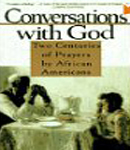 |
Washington, James Melvin (ed.) Conversations with God: Two Centuries of Prayers by African Americans. New York: Harper Perennial, 1994. |
Resources to Enhance Your Understanding of Domestic Violence
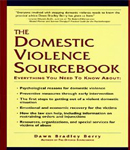 |
Berry, Dawn Bradley. The Domestic Violence Sourcebook : Everything You Need to Know. Los Angeles, CA: Lowell House, 1998. |
|
|
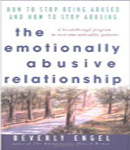 |
Engle, Beverly. The Emotionally Abusive Relationship: How to Stop Being Abused and How to Stop Abusing. Hoboken, NJ: John Wiley and Sons Inc., 2002. |
|
|
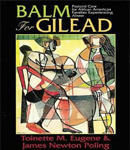 |
Eugene, Toinette M. and James Newton Poling. Balm for Gilead: Pastoral Care for the African American Family Experiencing Abuse. Nashville, TN: Abingdon Press, 1998. |
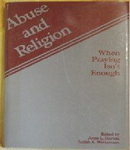 |
Horton, Anne L., and Judith A. Williamson, eds. Abuse and Religion: When Praying Isn’t Enough. Lexington, MA: Lexington Books, 1988. |
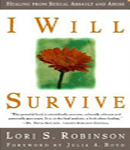 |
Robinson, Lori S. I Will Survive: The African American Guide to Sexual Assault and Abuse. New York, NY: Seal Press, 2002. |
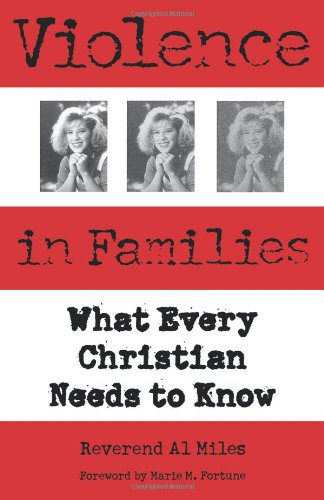 |
Miles, Al. Violence in Families: What Every Pastor Needs to Know. Minneapolis: Augsburg Fortress Publishers, 2000. |
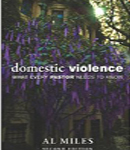 |
Miles, Al. Domestic Violence: What Every Pastor Needs to Know. Minneapolis, MN: Fortress Press, 2011. |
Articles
Bent-Goodley, Tricia B. “Eradicating Domestic Violence in the African American Community: A Literature Review and Action Agenda.” Trauma, Violence and Abuse: A Review Journal 2, no. 4 (2001): 316–330.
Bell, Carl C., and Jacqueline Mattis. “The Importance of Cultural Competence in Ministering to African American Victims of Domestic Violence.” Violence Against Women, 6, no. 5 (2000): 515–532.
Gillum, Tameka L. “The Intersection of Spirituality, Religion and Intimate Partner Violence in the African American Community.” St. Paul, MN: Institute on Domestic Violence in the African American Community, 2009. Online location: http://www.idvaac.org/media/pubs/TheIntersectionofSpirituality.pdf
Gray, James Weldon. “Spiritual well-being, family functioning, and coping strategies and domestic violence among African America men who batter.” Dissertation Abstracts International 63, no. 1-A (2002): 362.
Hampton, R.L. and Gelles, R.J. “Violence toward black women in a nationally representative sample of black families.” Journal of Comparative Family Studies 25, (1994): 105–119.
Wolff, Debra A., Douglas Burleigh, Maria Tripp, and Anne Gadomski. “Training Clergy: The Role of the Faith Community in Domestic Violence Prevention.” Journal of Religion and Abuse: Advocacy, Pastoral Care, and Prevention 2, no. 4 (2001): 47–62.
Notes
1. Billingsley, Amy Tate and Andrew Billingsley. Black Families in White America (Upper Saddle River: Prentice Hall, 1968), 68–69.
2. Eugene, Toinette M. and James Newton Poling. Balm for Gilead: Pastoral Care for the African American Family Experiencing Abuse (Nashville: Abingdon Press, 1998), 35–36.
3. “Fact Sheet: Intimate Partner Violence (IPV) in the African American Community.” IDVAAC: Institute on Domestic Violence in the African American Community. University of Minnesota. Web. Online location:
http://www.dvinstitute.org/forthepress/factsheets/FactSheet.IDVAAC_AAPCFV-Community%20Insights.pdf (accessed 15 March 2013).
4. “What Is Domestic Violence?” The Hotline. National Domestic Violence Hotline. Online location: http://www.thehotline.org/get-educated/what-is-domestic-violence/ (accessed 15 March 2013).
5. “The Problem.” The National Coalition Against Domestic Violence. Online location: http://www.ncadv.org/learn/TheProblem.php (accessed 15 March 2013).
6. “God Weeps.” By Shirley E. Murray. Zion Still Sings for Every Generation. Nashville, TN: Abingdon Press, 2007. #201
7. “God Is Here.” By Martha D. Munizzi, Israel Houghton, and Melissa Houghton.
8. “Behind the Wall.” By Tracy Chapman. Tracy Chapman. New York: Elektra/Wea, 1988.
9. Eugene, Tionette M. and James Newton Poling. Balm for Gilead: Pastoral Care for the African American Family Experiencing Abuse (Nashville: Abingdon Press, 1998), 111–132.
10. Ibid., 158–159.
11. Ibid., 137.
12. Jordan, Lynda Marie. “Domestic Violence in the African American Community: The Role of the Black Church.” Religious Healing in Boston: Publications Harvard Divinity School: Center for the Study of World Religions. 11 February 2002. Accessed 15 February 2013.
13. Tillman, Bernadine. “A Woman’s Place in God’s Heart.” God’s Word to Women. Online location: http://godswordtowomen.org/tillman.htm (accessed 15 March 2013).
14. Winter, Miriam Therese. Woman Wisdom: Feminist Lectionary and Psalter: Women of the Hebrew Scriptures: Part One. New York: Crossroad, 1993.
15. Ibid.
|